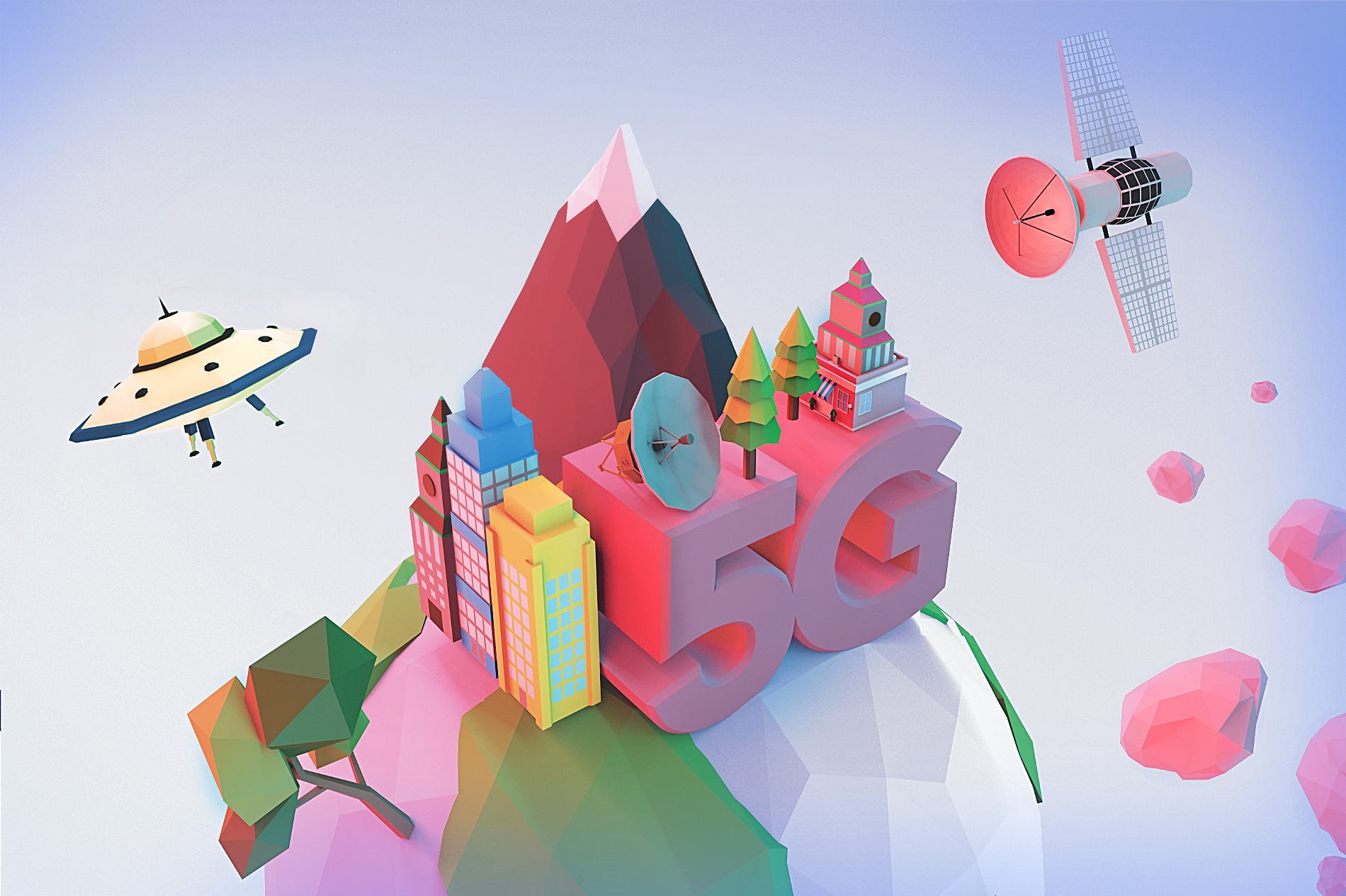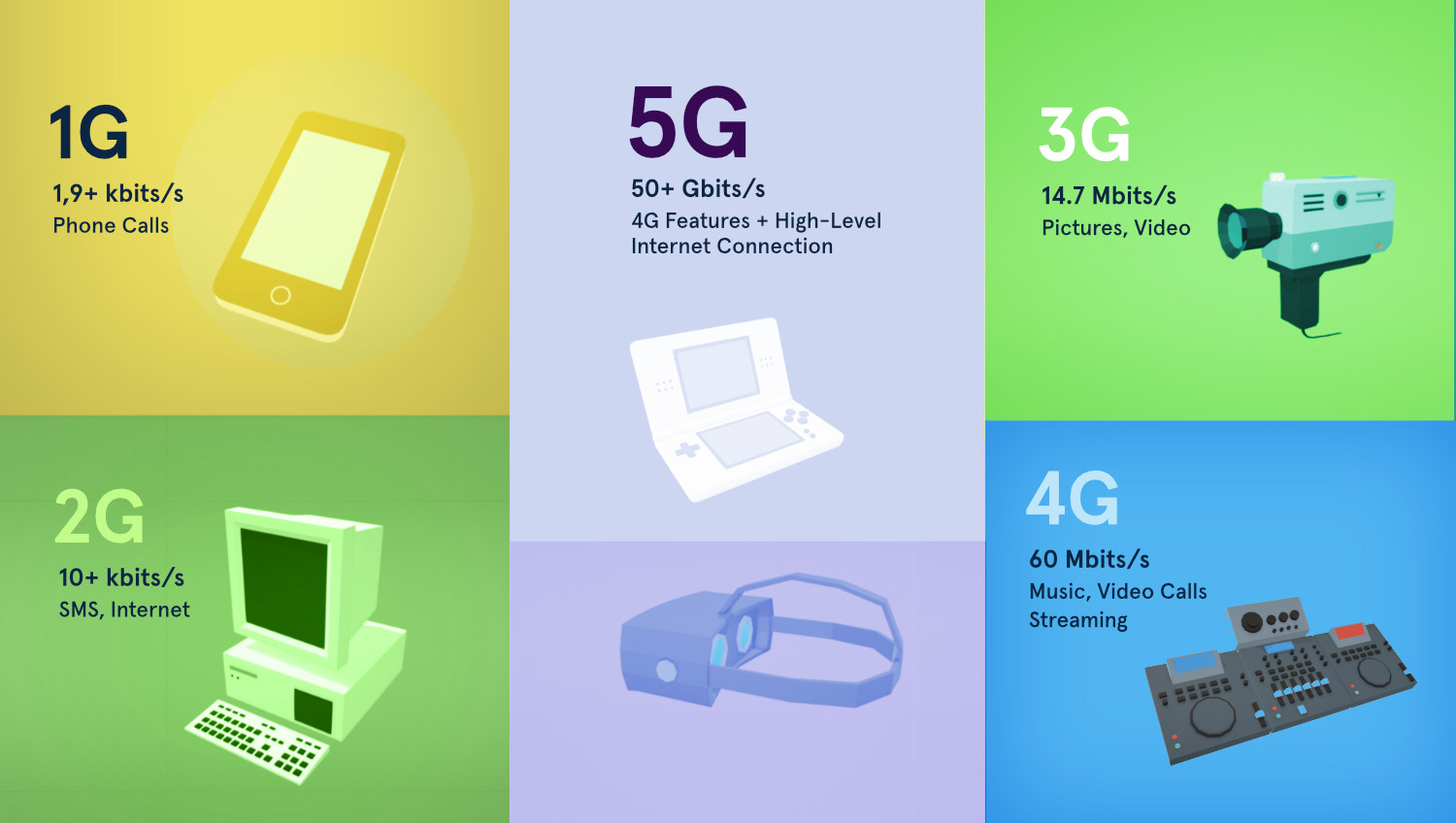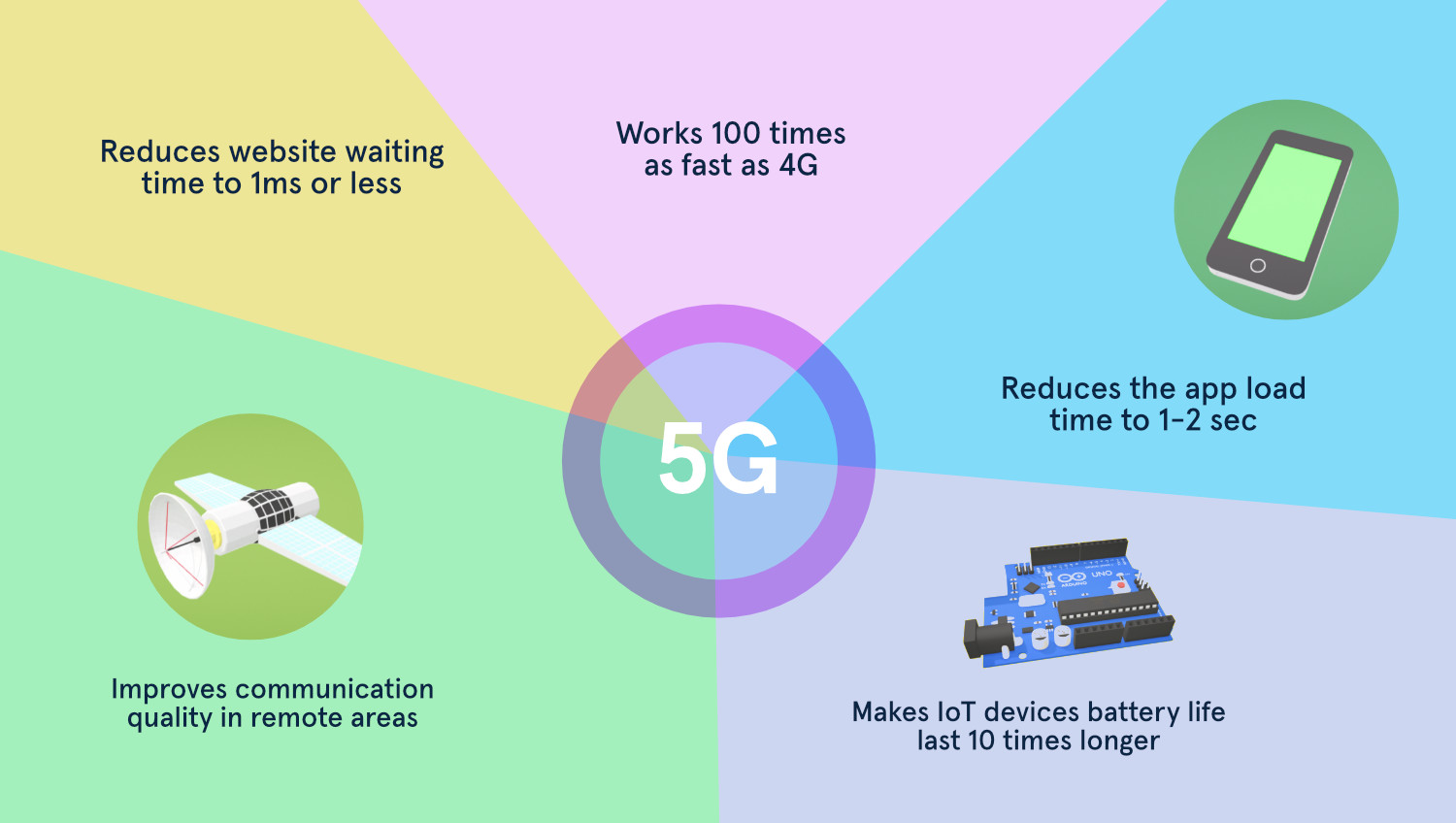
Could you have ever imagined a technology that would transmit millions of mb of data from your system to a myriad of globally connected devices in the blink of an eye? Fortunately, with the advent of the Fifth Generation wireless cellular network (5G for short) by 2020, it will become a possibility.
With the 5G rollout already started, it’s predicted that over 1.4 billion devices will be running on the 5G network by 2025 - accounting for 15% of the global total.

Also, according to IHS Economics, 5G is expected to contribute $12.3 trillion of global economic output by 2035.
These statistics give mobile app developers a clear insight into the bright future of 5G, encouraging them to prepare their existing apps to win the 5G race and launch new apps with 5G possibilities in mind.
Since 5G is not a modified version of 4G and is instead an entirely new network architecture, it definitely holds the potential to bring the Fourth Industrial Revolution and change the way that network ecosystems function. Unlike its predecessor 4G, 5G is a technological paradigm shift that will not only have a huge impact on wireless communication but also will change the world of mobile apps forever.
Meanwhile, while the 5G technology has a long way to its worldwide commercial launch, let us know in detail what 5G actually is and how it is expected to impact the mobile app development landscape.
5G: An Overview
To understand 5G, its relevance, and benefits, you first need to be familiar with its predecessors, which are 1G, 2G, 3G, and 4G. Let's go through them quickly one by one:
1G (Analog):
Introduced in the early to mid-1980s, 1G was the first generation of wireless communications, allowing people to make simple calls between mobile phones. The data transfer speed in 1G was about 1.9 kbit/second.
2G (GPRS):
Introduced a decade later in 1991, 2G was the first ever digital cellular technology to offer users voice calls, text-only SMS messages, and internet connection facilities, with a maximum data transfer speed of 10 kbit/second.
3G (UMTS):
Coming into existence in 1998, 3G was the third generation of wireless mobile technologies, offering a data transfer rate of at least 200 kbit/s and maximum 14.7 Mbit/second. This technology later led to the smartphone revolution, allowing users to send pictures and even make video calls.
4G (LTE):
Released in 2008, 4G is the current standard of wireless communications, allowing users to engage in data-intensive activities like gaming, video conferencing, high-definition live media streaming with a maximum real-world data transfer speed of 60 Mbit/second.

And now, we’re about to enter a new golden era of 5G. The fifth generation of wireless mobile telecommunications not only accommodates already existing opportunities of its predecessors but also offers a much faster data transfer speed of at least 1 Gbit/second and up to 50 Gbit/s.
Even, in some test environments, 5G has reached around 1 terabit per second (1Tbps), which is roughly 65,000 times faster than a typical 4G connection. However, in a real-world environment, you can expect 5G to deliver a consistent data transfer speed of 2.8Gbps. It really is a game-changing technology!
How is 5G Different & Better Than 4G?
Although the current standard of 5G largely depends on the existing LTE 4G infrastructure, speed isn’t the only thing that makes 5G far better and different from 4G. Some other notable benefits 5G has over 4G are:
✔ Low to Zero Latency:
As compared to 4G, which has an average latency of 50 milliseconds, 5G cuts the latency to just one millisecond, leading to less network interference and delays. Needless to say that the lower latency rate will prove quite handy for AR/VR based mobile apps.
✔ Increased Connection Density:
Where 4G allows only 2,000 devices to connect within .38 square miles, on the other hand, 5G supports the connectivity of up to 1 million devices in the same space, which is a great advantage for IoT (Internet of Things) mobile app developers.
✔ Improved Precision:
Using higher radio frequencies (in the 30 GHz to 300 GHz range) and shorter wavelengths than those used by 4G, 5G ships with much better precision capabilities that will prove extremely useful for high-precision GPS-enabled mobile apps.
✔ Enhanced Battery Life:
Increased speed and reduced latency likely lead to lower battery consumption. Consequently, 5G will extend the battery life of mobile and IoT devices by up to 10 times. Meaning, users will be able to use mobile apps for a longer period of time which will eventually benefit the mobile app owners and developers.
✔ New Use Cases:
The unique features of the 5G network, including low to zero latency, extremely high bandwidth, and increased connection density, open up a whole new world of new use cases that were impossible to be done via 4G. Some of these include:
- Industrial IoT
- Cloud AR/VR
- Remote Machinery Control
- Connected Automotive
- Wireless eHealth
- Smart Cities
Impact of 5G on Mobile App Development
Needless to say, with the release of 5G connectivity, mobile apps will start to function more efficiently and smoothly, which will eventually boost the overall productivity of both users and developers as:

✔ Faster File Transfers:
There are many apps that revolve around the transfer of files, money, data or anything transferable from one device or account to another. Leveraging bits of the electromagnetic spectrum instead of radio waves, 5G will prove to be a boon for such mobile apps through the speediest file transfer. As a result, users will be able to stream 4K and 360° videos from their smartphones without any lag.
✔ Next Level, Media-rich User Experiences:
One of the greatest benefits of 5G technology is the clarity of the User Interfaces. Just watch a video or listen to music on a 2G, 3G or 4G network, then stream the same over an LTE Network and you’ll surely understand what it means. Undoubtedly, the new network will encourage developers to elevate the app UI to a huge extent.
✔ Greater Capacities and More Features:
With rocket-like speed and ultra-low latency, developers will have the option to incorporate more features and capacities to IoT, virtual and augmented reality apps, which will lead to exceptional and powerful user experiences. This will not only help developers increase user retention but also will play a vital role in increasing the overall app revenues.
✔ The Rise of Navigational Mobile Apps:
High-quality, uninterrupted communications will open up a whole new world of opportunities for the development of navigational apps. In fact, 5G will contribute a lot to the growth of the tourism industry. For instance, a developer will be able to build a mobile app containing all the popular historical places from different countries as well as offering a bunch of unique features to users.
✔ Use of 3D Models:
With the arrival of 5G, mobile app development related to 3D gaming and immersive augmented reality will get a great boost. The use of 5G-enabled mobile apps with cutting-edge 3D printers will allow users to create top-notch quality 3D models of objects. Such mobile apps will be used in multiple areas, spanning from construction to education.
✔ The New Generation of Personalized Chatbots:
Although Chatbots aren’t ready to fully replace humans yet, the synergy of 5G and chatbots will definitely create better opportunities for real-time, prompt feedback. Also, the arrival of 5G could even lead to the dawn of Tactile Internet, where users can control and receive haptic feedback from leading-edge machines.
✔ Less Reliance on Hardware:
5G means blazing fast real-time communication between devices, where millions of mb of data can be transmitted without any delay. Consequently, the performance of a mobile app will be less dependent on the processing power of the hardware of mobile devices because data centers will be doing all the processing.
✔ Challenges Associated with the Implementation of 5G in Mobile Apps
As every coin has two sides, 5G networks also present several challenges for mobile app developers along with the benefits. Some of the challenges that developers may come across during the implementation of 5G are:
✔ Security Issues:
Given that with great speed comes the greater number of connected devices and networks, 5G may introduce some serious loopholes in terms of security and privacy.
✔ The Setup of 5G-based Business Model:
The network speed which the 5G network is expected to be launched with will require a 5G-based business model that can unleash the potential of the 5G technology to the fullest. This is really something that a mobile application strategist will have to put a lot of effort into.
✔ Multiple App Versions:
With 5G coming into practice, mobile app developers will face the challenge of creating multiple app versions as some users will be using 5G-enabled devices while other devices will be still running on 2G, 3G or 4G networks.
Some Proven Ways to Prepare Your Mobile App for the 5G Revolution
Now that you’ve got familiar with 5G challenges, let’s take a closer look at things that mobile app developers can incorporate into their apps to make the most of the 5G network.
✔ Ambient Computing:
Ambient Computing is all about delivering users digital experiences that involve the surrounding environment and conditions with the ability to facilitate and measure to machines, devices, sensors, and technologies such as AI, ML, and IoT. Thanks to the increased power of 5G, which makes the implementation of Ambient Computing through wireless networks possible, developers can leverage this opportunity in their mobile apps to provide users with more reliable connectivity and wireless support.
✔ Reliable Wireless Interactivity:
Owing to the slow nature of current wireless technologies, developers today are required to work in waiting periods for their apps having a download process. Many even recommend executing the same process only over Wi-Fi, which can hinder the availability of the app. However, with the release of 5G, developers can allow users to download and install substantial data packages over mobile networks too.
✔ More Devices Connectivity:
Given that Internet of Things (IoT) is one of the most popular segments of the tech market today, developers can take advantage of smart home gadgets, wearable devices and sensors in their mobile apps to make them smarter and more capable of connecting with numerous devices.
✔ Artificial Intelligence and Machine Learning:
The birth of 5G will definitely bring a new life to AI and ML-based apps that collect and analyze a massive quantity of data to make spontaneous decisions. With greater access to an open connection and reliable wireless support, app developers will be able to empower their apps to turn analyzed results into on the fly-decisions more promptly.
✔ Cloud Technology Support:
Many mobile apps and services are currently leveraging Cloud technology as “software as a service”. However, due to patchy internet connections, this idea is not as rampant or accepted. But, by harnessing the true power of Cloud technology through 5G, developers can build much faster and smarter cloud-hosted apps that will soon become everyone's favorite.
✔ Streaming VR Experiences:
Nowadays, VR technologies are not only being adopted extensively on a consumer level but have also become a vital part of mobile app technology stacks. Unfortunately, streaming support through VR is still nearly impossible due to serious latency and bandwidth concerns. Eliminating all these concerns with the help of 5G, developers can make their apps ready to deliver truly virtual reality experiences to users.
✔ Always-On Connectivity:
Since 5G is a more reliable and battery efficient network than its predecessors, devices will be less likely to disconnect from the network. With this kind of always-on connectivity, developers can leverage the constant access for their mobile apps, providing users with a more advanced ambient connectivity.
Summing Up
In a nutshell, owing to its blazing fast speed, zero network latency, and higher bandwidth, 5G technology will prove to be a game-changer in the mobile app development arena. Not only it will open up a whole new world of possibilities for developers to improve their mobile apps but also it will emerge as a blessing for users in terms of user experience.
Author
I'm Jay M, an app developer and blogger working with iPraxa – A Mobile App Development Company, who has proven expertise in resolving all the technical complexities involved in the development of innovative, unique websites and apps. I spend my spare time on the web to learn about the latest technologies and love to share my knowledge with others through my content. Find out more about me on LinkedIn.
